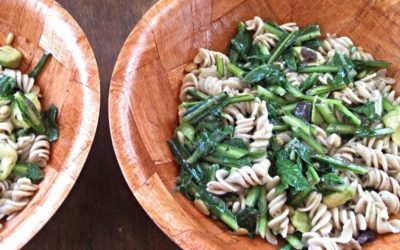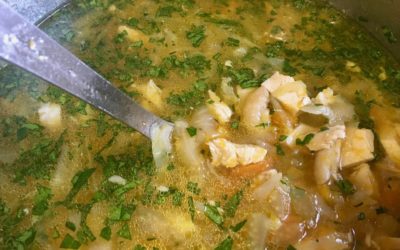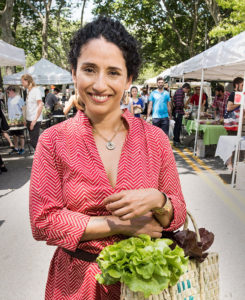A year ago, I was living with arthritis. For three weeks last January, I experienced intense migratory joint pain that would subside only briefly — and never completely — after taking a couple of Aleve, which I was doing every 12 hours.
This is what’s happened since.

First, the diet.
For 60 days, I stuck to a strict elimination/provocation protocol — I started with a version of the Autoimmune Paleo and modified it based on my body’s feedback.
The diet implied a lot of no’s:
- No grains, beans, nuts, or ANY other kind of seeds, including coffee and chocolate — yes, those are seeds — or spices used in their seed form — i.e., mustard, coriander, cumin, caraway, etc. I eliminated black pepper the first week only. Gluten is of course, excluded by default.
- No dairy, though I reintroduced butter after the first week.
- No nightshades — the family of vegetables that includes tomatoes, peppers, eggplants and potatoes.
- No eggs.
- No coconut products. Whereas the Autoimmune Paleo protocol allows coconut, I identified I was reacting to it in the first week of the diet.
On the other hand, the diet emphasizes the use of very nutrient dense foods like organ meats, oysters, shellfish and bone broths. I made an effort to introduce more of those into my diet.
In lieu of my usual spices, I rediscovered aromatic herbs, lemon, ginger and turmeric, to flavor my food. I completely let go of the ‘breakfast foods’ concept. My meals started to look a lot like each other. Since I had to cook every single meal, keeping meal preparation very simple made the adaptation possible for me.
The diet, though difficult to follow, was a roaring success: By Day 15, I had stopped taking Aleve. At the end of the first month I had enough strength to take a yoga class. I kept improving until I reached my “zero triggers diet”, meaning, I was virtually asymptomatic. I knew then that to the best of my ability, I wasn’t eating anything that could trigger an autoimmune reaction.
At the 60-day mark, I started to reintroduce foods — slowly and in a very systematic way in order to minimize the number of factors involved in a potential reaction. I successfully reintroduced all spice seeds — yay for cumin! — except for mustard, which caused me wild sinuses pains followed by dull muscle aches. I was experiencing in my own body something I had observed in some of my clients: many times, reactions to food just can’t be explained. Why in heaven would I react to mustard and not to other similar foods? Who knows!
I then proceeded to reintroduce some seeds I use frequently: pumpkin, sunflower and sesame. No problem there. Win!
Nuts followed: almonds, walnuts, pecans, hazelnuts, Brazil nuts and pistachios. I was relieved to be able to reintroduce seeds and nuts because, well, I really like them! Besides, it’s just so much easier to plan a snack if you can carry some trail mix with you. However, the experience of removing them from my diet and reintroducing them taught me that there was a time when I was eating simply way too many seeds and nuts. They are, after all, very nutrient dense foods which means that a little bit goes a long way.
The next month I focused on carbohydrates. My unintended weight loss, a sudden obsession with food that would not subside no matter how much I ate, and the fact that my stools were getting looser, propelled me to tinker with the amounts and kinds of starches I was eating. Because of my background and upbringing, I figured I’d do well to add more of the heavy starches present in plantains and roots like yuca and taro. I was right: daily rations of yellow and green plantain, cassava bread and yucca really satisfied me and my stools regained the appropriate consistency. Win!
In May (the 5th month) I started to reintroduce dairy products. To my delight, my tolerance widened compared to before I went through the elimination process. I can eat yogurt, cream and cheese with no ill effects. However, I do have a tolerance point, at which I start getting skin rashes and post nasal drip.
In June I successfully reintroduced white rice which I enjoy occasionally. I also started to experiment with coconut products: oil first, then the flakes, milk and, finally, the flour. I learned that I have a distinctive tolerance point for coconut products. I can do them on occasion, but not too frequently. I get stomach cramps and stools showing partially undigested food when I overdo them.
I took a month off of reintroductions in July, and in August I tried one I was really looking forward — chocolate. My first attempt was unsuccessful; I immediately felt heaviness in my stomach and I got uncomfortably “high” from it. I tried again a week later, and that went a little better. I now know that chocolate is a food I can’t tolerate as frequently as I want to eat it, i.e. every day. Whereas the symptoms of excess dairy or coconut are digestive, it is different with chocolate. The dull body aches return if I overdo it.
The last food I tried in this round of reintroductions was peanut butter. Yes, I know peanuts are a “bean” not a “nut;” I know that they’re decisively not “Paleo” or “GAPS;” and I know that I could use almond butter or sunflower butter instead, but I love peanut butter! I don’t eat a lot of it and it doesn’t have negative effects. It’s a keeper.
By late fall I had reintroduced most of the foods I was eating before I developed the joint pain, except for coffee, eggs and nightshades. I was able to reintroduce mustard as if nothing had ever happened — again, who knows why that would be.
I planned to spend a month in Colombia during the holidays so in October and November, I didn’t attempt any more reintroductions. I focused my attention on other lifestyle factors and supplementation, which I’ll tell you about in another post.
In Colombia, obviously things changed. For a couple of weeks, I had hot chocolate, eggs, cheese and arepas — a corn-based bread similar to a pita — for breakfast virtually every morning. I didn’t notice any reactions to these foods. I was on vacation and getting plenty of movement: hiking, swimming in open water, playing around.
Even though I did my best to avoid them, there were a few times during my trip when I had a meal containing nightshades — a tomato based sauce or a soup with white potato in it. I didn’t make a fuss about it, but tried to breathe deeply and take in all the goodness of the moment along with the food. I got tired and I got some of that dull aching that showed I’m still better off avoiding the nightshades, but I don’t regret the experiments. Incidentally, I did eat “criolla” — a small, yellow potato — twice, which didn’t seem to cause any negative reaction. It’s a shame I can’t get that in New York, or I’d do a systematic reintroduction to confirm.
I also gave myself the pleasure of one delicious, aromatic coffee in Bogota. I enjoyed it thoroughly but I got confirmation that coffee is off-limits for me: my knees were aching within 20 minutes of having it.
Many of the clients I’ve worked with must keep very strict dietary restrictions once they’ve figured out their triggers if they want to stay asymptomatic. Veering away often means dramatic regression. I am fortunate to have a little more room for experimentation, probably due to the fact that I caught the migratory joint pain very early and that my diet was very healthy to start with.
I am now back to my almost-paleo-sans-coffee-or-nightshades diet. For now I’m eating eggs only on rare occasions. I plan to go through another cycle of elimination with the support of the regenerative supplements I used the first time around. I’ll tell you about those next time.

About Andrea
I am a functional medicine health coach and a therapeutic diets chef and my mission is to help you feel great in your physical body so that you can focus on living the life you want.
Since 2005 I've been dedicated to the study and practice of nutrition, wellness and functional medicine principles, which I translate into a customized practice for you. Think of me as a project manager. The project? YOUR freedom from chronic dis-ease.












0 Comments